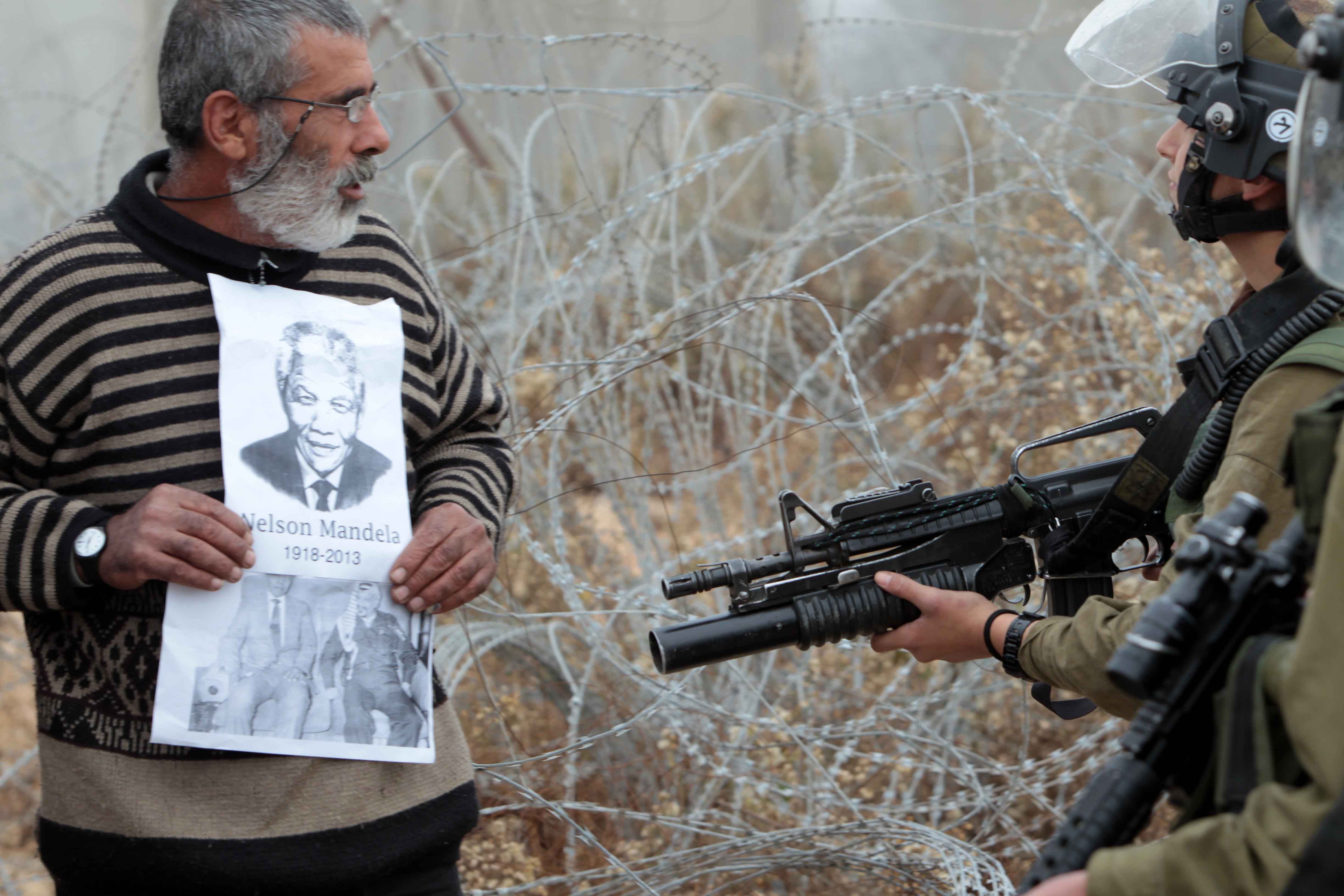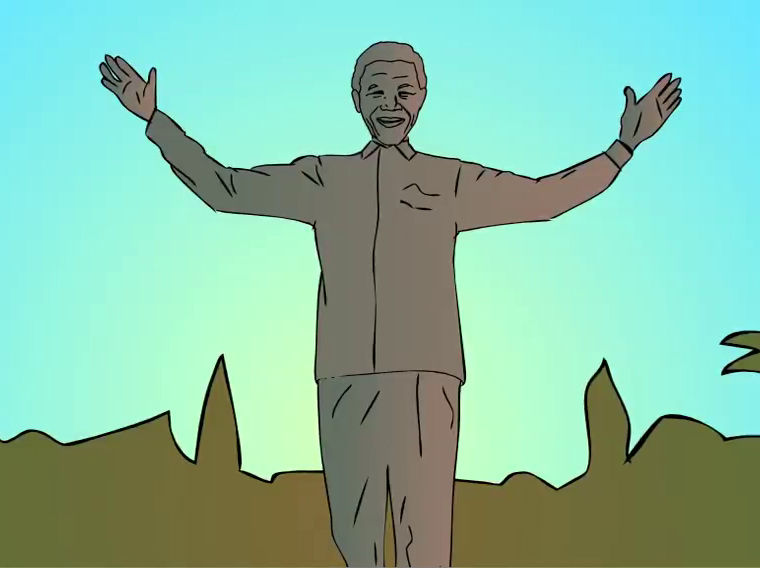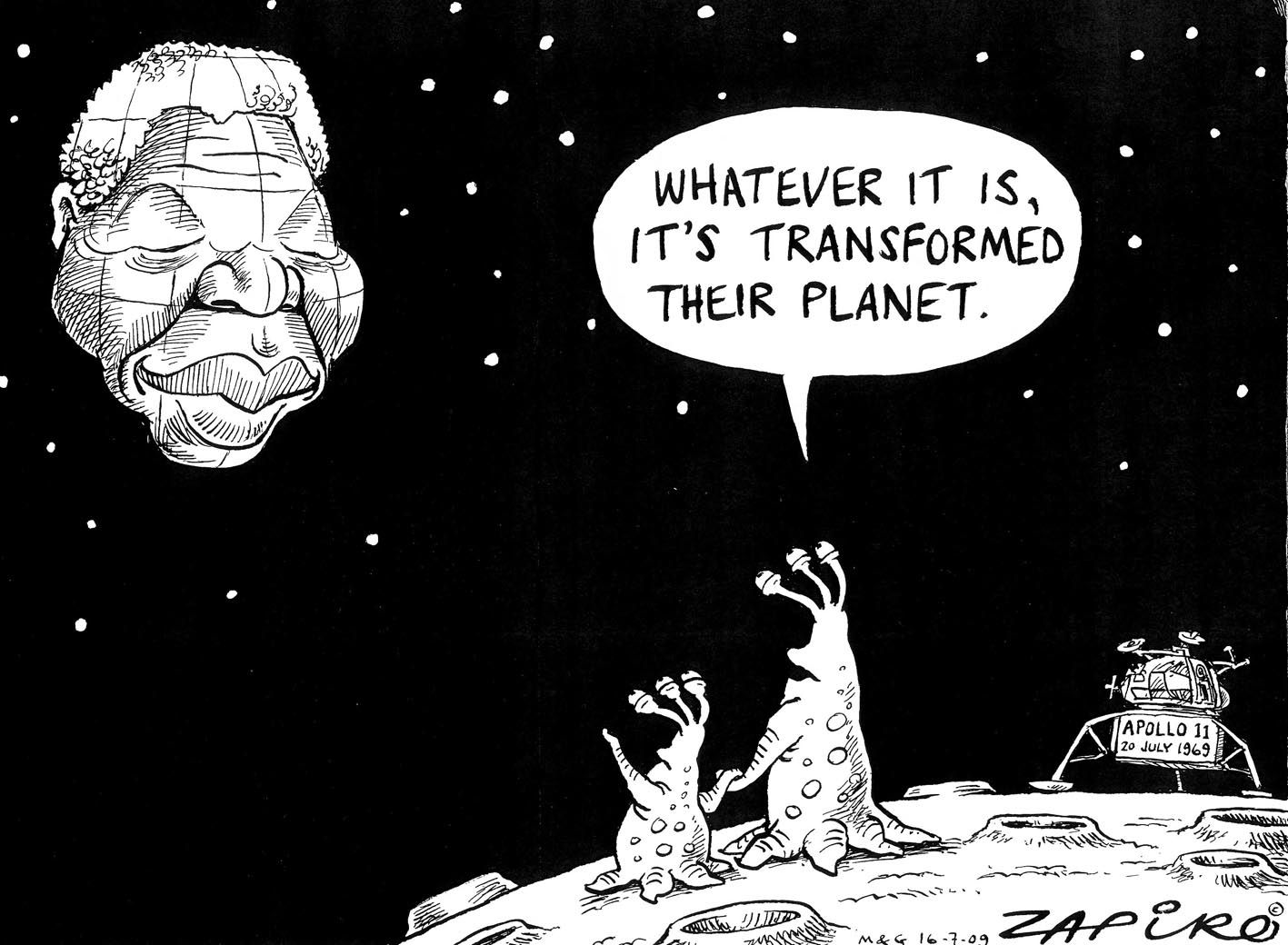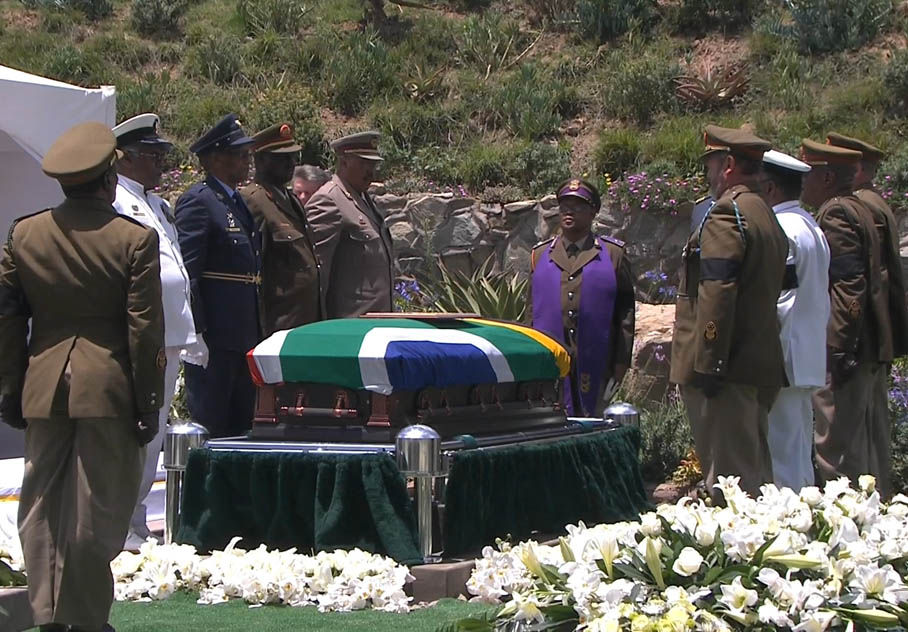
The world pays tribute to Mandela (slideshow)
As South Africans come to terms with the loss of former president Nelson Mandela, the rest of the world bids farewell to Madiba.

Pimples: Saving Madiba's rabbit (video)
Gwede, Mac and Blade try their best to stop the rabbit from whispering in Mandela's ear. But the elusive animal has some tricks up its sleeve.

Zapiro's best Madiba cartoons (slideshow)
From his toughest moments to his most triumphant, Madiba has been an inspiration. Here are some of our favourite Zapiro cartoons about him from 1994 to 2013.

Mandela: SA's greatest son laid to rest (slideshow)
The world watched as Nelson Mandela was finally laid to rest in his hometown of Qunu following a dignified and moving funeral ceremony on Sunday.
A man works an antique Singer sewing machine in the shade of a makeshift awning on a street corner in Alexandra township, Johannesburg. Nearby are dozens of shacks improvised from cardboard, concrete blocks and corrugated tin packed like squares of wheat. On the horizon are the skyscrapers of Sandton, the wealthiest square mile in Africa, as visible yet intangible as Manhattan to Marlon Brando and the longshoremen of New Jersey in On the Waterfront.
I had just been standing outside Nelson Mandela's first home in the big city. He moved to Alexandra in 1940 and lived there without running water or electricity, on a weekly wage of R23. At times, a simple information panel says, his only hot meal was Sunday lunch sent by his landlords. Today, the yard does have electricity but water is shared via a communal tap.
Inevitably, all the former houses of South Africa's first black president are a tourist draw. On Vilakazi Street in Orlando, Soweto, there is a tiny redbrick building where he lived from 1946 until his arrest and imprisonment in 1961. His wife, Winnie, and their daughters continued to live there even as the house was petrol-bombed and set alight several times.
Last week another former Mandela home was named a national memorial site. The former Victor Verster jail in Paarl, near Cape Town, is where he spent the final months of his 27-year incarceration. Now named the Drakenstein correctional centre, it was the focus of events to mark the 20th anniversary of the day Mandela, unseen by the public for nearly three decades, walked free to become probably the most respected statesman in the world.
Unlike his small cell on Robben Island, also a visitor magnet, he was allowed to live in a house within the prison's grounds. It became the scene of intense negotiations that led to the final dismantling of racial apartheid. It was opened last week to a privileged few, including the foreign press.
"You're going to walk?" asked an official. "Well, follow the road all the way to the end, then turn right at the T-junction."
"How long will it take?" I asked. "About 15 minutes, maybe 20," the official replied.
That didn't sound so bad. I set off and saw some other journalists along the way. "I'm going to Mandela's house," I said. They followed for a while, but then a long road stretched into the distance. They left me to it, but an old man followed a little way behind.
I turned right at the junction only to find another long road before me. On the right, beyond a wire mesh fence, were expansive fields and vineyards, stretching out to dramatic mountainscapes and a cloudless blue sky. On the left were prison buildings, parking spaces, offices and yards.
I lengthened my stride, my casual foray hardening into a purposeful expedition. I saw two prisoners at work in orange uniforms. They smiled and waved. There was a man sitting in a nearby guardhouse.
I asked: "How far is it to Mandela's house?" He smiled. "About three kilometres."
"Thanks," I grimaced. I'd come so far already, it seemed too much like defeat to turn back. I marched on through the prison grounds with the old man still on my tail. I'd been on the move for an hour. It felt like a long walk to nowhere. But on a day of noise and clamour, it was a chance for peaceful contemplation.
A series of houses and streets hoved into view like a small town. It had a strangely artificial feel, the kind of place built for a film set or a Cold War nuclear bomb test. I wondered if Mandela's home could be here and started to turn left, but the old man waved his arms and pointed onward.
Finally, sweat on brow, I reached a dusty dirt track that again seemed to disappear on the horizon. I pursued it to the end and turned a corner, past an allotment circled by barbed wire. Mandela's house was visible at last.
A shuttle bus pulled up alongside me. "Would you like a lift?" the driver asked. Like a marathon runner collapsing near the finish line, I accepted help for the last couple of hundred yards.
Outside the house was a neat garden and a lemon tree that Mandela had planted. Inside it was comfortable, spacious, with a curious period decor reminiscent of the 1970s BBC play Abigail's Party. There were beiges, browns and oranges in the carpets and curtains, Formica tables in the kitchen and powder blue tiles in the bathroom.
"That's horrible!" exclaimed one female visitor, surveying a rose-patterned duvet cover in one of the bedrooms. "Oh my goodness!"
'He sometimes misses life in prison'
A guide said Mandela preferred a smaller bedroom with a party trick: he could open a wardrobe door that led, Narnia-like, directly to a bathroom.
There were sparse furnishings and appliances, including an ancient plastic washing machine and equally old Electrolux vacuum cleaner. Some of the clinical white walls were adorned with garish portraits of the house's celebrated former tenant.
I stepped outside to find some Romanesque pillars, a high wall that residents of Johannesburg would recognise, and a swimming pool. A day earlier, I'd heard Mandela's daughter Zindzi recall wistfully: "It was a place where we could sit with him. I'd actually never seen my father in swimming trunks before. There were moments like those when, wow, I never knew this about my dad."
When her father subsequently built a house in his hometown, Qunu, in Eastern Cape, she said, he requested a replica of this one. Zindzi wondered why he wanted a duplicate of his final prison.
She explained: "Many times in our conversation he would say he sometimes misses life in prison because he often had time to reflect and he felt that he made fewer mistakes. Being out in the hustle and bustle of everyday life, he didn't have as much time to introspect."
Later, at a celebratory rally, leaders of the African National Congress stood on stage sipping champagne. Their supporters pushed at a steel fence and reached out pleading for water. Outside the prison gates, more leapt over fences to steal grapes from the vineyards. No one was in a hurry to go home. - guardian.co.uk

